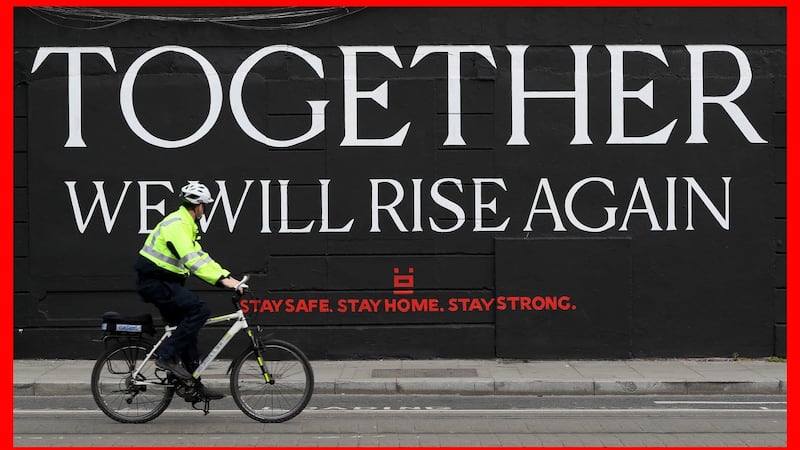Cafes and restaurants could reopen by the middle of the summer, with people allowed travel within Ireland for holidays by late summer, under plans being discussed to gradually lift the coronavirus lockdown.
The Irish Times understands the early stages of plans being discussed by the National Public Health Emergency Team (NPHET) would see retailers, cafes and restaurants reopen on a limited basis, with the tourist industry also reopening on a limited basis in the mid-stages.
The phases are broken down as: initial phase, early phase stage one, early phase stage two, middle phases and late phases. The latter two phases could be broken down into more stages.


Initial drafts of the plan spaced the phases out in periods between early May and September, although no dates are on the latest draft being considered by NPHET.
Any easing of restrictions is entirely dependent on efforts to tackle the virus, and progress through the phases will not happen unless a number of key targets are met.
Taoiseach Leo Varadkar and Minister for Health Simon Harris told the Cabinet on Tuesday that there are "no indications that disease levels are low enough to enable any easing of restrictions" when the current phase of lockdown ends after May 5th. Officials on Tuesday night conceded delays in ramping up testing capacity for Covid-19 are a factor in the likely decision not to lift lockdown restrictions at the end of this week.
An inability to meet the target of providing 100,000 tests a week “feeds into” the stance of officials in relation to the lifting of restrictions, according to the head of the Government’s expert advisory group on the disease, Dr Cillian de Gascun.
Weekly testing
The long-promised 100,000 weekly tests target is a critical step to help track infection rates as lockdown measures are relaxed in order to assess whether they are leading to new Covid-19 cases.
The primary parameters influencing NPHET’s decision would be trends in case numbers, deaths and intensive care unit admissions, he said. Current laboratory capacity stands at 60,000 tests a week, but this would increase to 70,000 next week.
Sources stressed that each phase of the plan, expected to be announced later this week, would contain a “menu” of actions that could be chosen. Specific actions could also be moved between phases. Social distancing will continue to apply through all phases.
Under the latest draft, the first phase would allow the over-70s who are cocooning out to walk on a “no touch” basis; see the over 70s potentially allowed go to the shops at certain times; allow outdoor workers such as builders and gardeners return to work; allow a maximum of four people not from the same household gather outside while obeying social distancing; recommence some restricted classes for Leaving Cert students; potentially increase the distance people can travel outside their home for exercise from 2km to 5km or 10km; allow retailers such as DIY and garden centres reopen; and allow retail outlets deemed essential in an earlier round of restrictions – such as banks, repair shops, optometrists and others – open again.
Family units
Although flagged by some on NPHET in recent days, the broadening of family units is not seen as likely in the first phase. Other measures – such as the number of people allowed gather together – are also expected to be scaled up throughout the phases.
The next phase – “early phase stage one” – would allow small retailers reopen by allowing only a limited number of staff and customers on the premises. Restrictions on travel away from the home could increase to 20km. Open marts could also recommence.
“Early stage phase two” would see cafes and restaurants reopen, as long as social distancing and strict cleaning rules apply.
The so-called “middle phases” would see the tourism industry – hotels, hostels, caravan parks – reopen on a limited occupancy basis. Travel restrictions would be further eased to allow people travel outside their regions. Any holidays or breaks should be taken by family units only.
The “later phases” would see the wider reopening of the economy – such as pubs and offices – again if social distancing is implemented. Schools would also reopen in September, again complying with social distancing. Mass gatherings of over 5,000 people have already been effectively cancelled until September.
Guidance around these events is unlikely to be provided until much later in the year, similar to family events such as weddings. Cocooning is also expected to last for the foreseeable future, until vaccines or treatments for Covid-19 are found.












